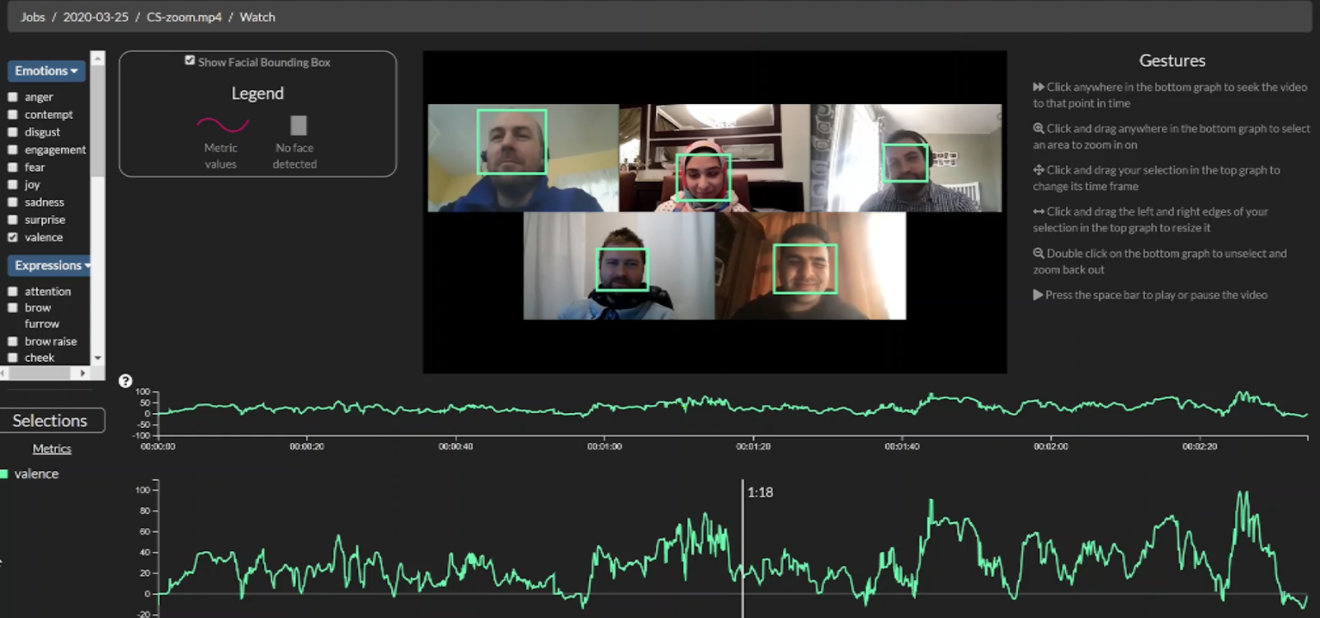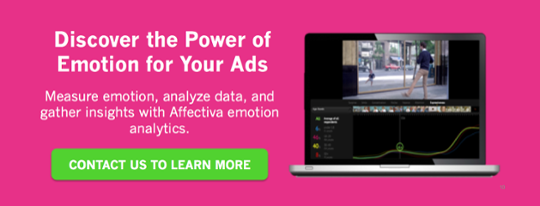This blog was written by Alex Duckett, Affectiva's Account Director of Media Analytics

Covid-19 has disrupted the practice of qualitative research, perhaps forever. A recent Esomar study found that a majority (55%) of researchers endorsed the view that with ‘no more face to face sessions, everyone is thinking of new ways of engaging research participants’.
Where online interviewing is the norm, how can qualitative researchers still effectively “read the room” during and after groups and depth interviews? The latest iteration of Affectiva’s Emotion AI technology has been built to complement Qualitative Research skills. It helps researchers highlight emotional trigger points for use in analysis and feedback to clients, differentiating their work from the now ubiquitous “Zoom interview”, while being easily deployed as part of the existing online qual process.
Empathy and emotional intelligence are key attributes of the Qualitative Researcher. However, now that we’re operating in a business environment where the certainties of face-to-face interaction have been disrupted by a global pandemic, how can Qualitative Researchers accurately and authentically understand the emotional responses of their participants in an online environment?
There’s an understandable clamor for technological solutions, to facilitate clear and meaningful communication with respondents in this ‘socially distanced’ world. At Affectiva, we’ve recently received a lot of interest in our technology, to understand how it could provide extra insight into much of the online qual work happening at the moment.
We’ve developed Emotion AI to provide deep insights into unbiased and unfiltered emotional responses. As we’re in the business of emotional intelligence, we appreciate that technology applied in isolation from the human experience is going to offer neither practical support nor value.
We wanted to ensure that our technology could complement the underlying emotional intelligence of the qualitative researcher AND add incremental insight. The universality of the ‘Zoom experience’ also only strengthens the need for researchers to meaningfully differentiate their approach in this space.
We illustrated this technology on ourselves, recording one of our team meetings via Zoom, and then running that content through our emotion classifiers (for simplicity we are showing Valence, or ‘net’ emotional positivity, the green line shown in the clip).

We've averaged the responses of the 5 people in the meeting, to arrive at an overall view of the emotional tone of the videoconference.
We were discussing in our team meeting the current pandemic and its impact around the world—and there is a lot of variation in emotion as the conversation progresses. Digging deeper, you can see how the team smiles in sympathy when one of the team discusses the difficulties surrounding his house move under lockdown. This shows both the natural empathy that we have for each other, but also that Emotion AI technology can capture that response and allow us to understand that at a scale not possible simply by eye, when there are many people on a virtual meeting.
So how can Emotion AI help Qualitative Research?
As this very simple illustration shows, Affectiva‘s Emotion AI brings out the emotional subtleties and shared feelings in a way that can support the Qualitative Researcher’s own perceptions in an online setting.
It can highlight over a whole focus group or interview the ‘emotional highlights,’ or crucial times where a respondent may be feeling something different to what they are saying.
Further, the scientific validity of demonstrable evidence and the ‘theatre’ of showcasing moment by moment emotional responses with clients gives the Qualitative Researcher a unique edge: engaging emotional insight that complements their underlying human intuition.
Interested in learning more about Affectiva’s Qualitative offering? Contact us today for more information!






